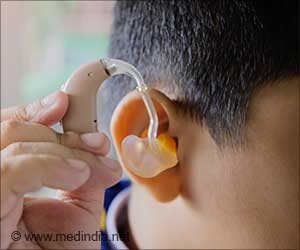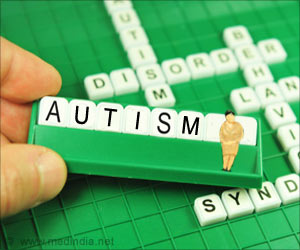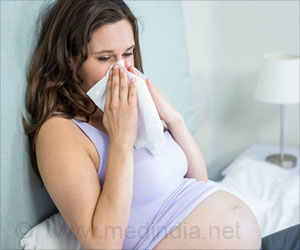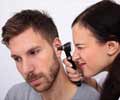Common ear, nose, and throat infections in preschoolers could be linked to autism risk.
- Autism is a developmental disability caused by differences in the brain that affects millions worldwide
- A recent study has found a link between common ear, nose, and throat infections in early childhood and the subsequent development of autism
- The researchers note that not all preschoolers who have ENT issues will develop autism but the study may help us understand the possible early signs of autism better
The authors of the study also note that the causes of autism probably involve a combination of genetic, environmental, and biological factors, and the origins of each autistic trait may also differ.
Former studies have suggested that ENT conditions, such as ear infections and sleep-disordered breathing may play a role in developing autism. The issue with this evidence is that most of it is based on health records, which may be biased as parents of children with suspected autism may be more likely than other parents to seek medical help for their offspring, according to researchers.
Trying to Find an Unbiased Link Between ENT Problems and Autism
To steer clear of this bias, the researchers drew on participants in the long-term Children of the 90s study, also known as the Avon Longitudinal Study of Parents and Children (ALSPAC). This has tracked the health of more than 14,000 children since birth and that of their parents from the early 1990s onward.The current research is based on extensive data from more than 10,000 young children who were closely monitored throughout their first 4 years. Their mothers completed 3 questionnaires when their children were aged 18, 30, and 42 months, which were designed to record the frequency of 9 different signs and symptoms relating to the ear, nose, and throat as well as any hearing problems.
They also completed 3 questionnaires when their children were just over 3, nearly 6, and 9 years old. These were designed specifically to highlight speech coherence, social and communication issues, repetitive and abnormal behaviors, and sociability; traits that are characteristic of autism. A diagnosis of autism was confirmed from educational records and parental feedback, along with other sources.
Adjustments were made for 10 potentially influential ‘environmental’ factors which are: early or late birth; sex; the number of mother's previous pregnancies resulting in a live or stillbirth; breastfeeding; postnatal depression; mother's educational achievements; mother's smoking at 18 weeks of pregnancy; mother's belief in her own agency; child's exposure to environmental tobacco smoke at 15 months; child's attendance at daycare by the age of 30 months.
In total, 177 children had a possible diagnosis of autism:139 boys and 38 girls. Those with autism traits were defined as the 10% of the sample with the highest trait scores.
ENT Issues May be Associated with Traits of Autism
Early evidence of breathing through the mouth, snoring, ear pulling or poking, reddened and sore ears, worse hearing during a cold, and rarely listening were all more commonly associated with high scores on each of the 4 autism traits, and with a diagnosis of autism.Pus or sticky discharge from the ears has also been linked to autism and poor speech coherence.
Children From the Ages of 30 and 42 Months at Highest Risk
When compared to the other ages tested, strong associations were especially seen when the child was age between 30 and 42 months. Children with high scores on autistic traits at 30 months had more ENT signs. Autism was notably associated with all signs except for symptoms of sleep apnea, which is interrupted breathing during sleep.The inclusion of the ten environmental factors had little effect on the outcomes. Children with discharge from their ears were more than 3 times as likely to have autism, while those with impaired hearing during a cold were more than twice as likely to do so. Children who failed to react to nearby noise were more than 6 times as likely to have autism at this age.
Having ENT Problems Doesn’t Necessarily Equal Autism
Nonetheless, the researchers point out, "These ENT signs and symptoms are very common in childhood and most children who experience them do not go on to be diagnosed with autism. For example, of the group of around 1,700 children who snored at age 30 months, most (1,660) weren't diagnosed with autism later on."The authors take note of the various limitations, including the loss of some children to subsequent monitoring, as is the case with many long-term studies, and the lack of ethnic diversity among the Children of the 90s participants, limiting the wider applicability of the findings.
Furthermore, the children weren't examined consistently to determine a diagnosis of autism; rather, a strategy to assess the probability of a diagnosis using a variety of different sources was used instead.
However, the researchers conclude that the associations they found "may be important because
- these ear and respiratory signs may be early markers of increased risk of autism
- they may inform the origins of autism, or
- they may highlight co-occurring conditions that if treated may lead to a better quality of life for children with autism."
But they warn, "It is not possible to determine whether these ENT conditions have a causal role in the development of autistic traits or are related to an unmeasured factor. One possibility, for example, could be the consequence of the increased prevalence of minor physical anomalies in individuals with autism, including anatomical differences in the structure and/or positioning of the ear, with such differences in ear morphology increasing the risk of ENT conditions."
Reference:
- Associations between autistic traits and early ear and upper respiratory signs: a prospective observational study of the Avon Longitudinal Study of Parents and Children (ALSPAC) geographically defined childhood population - (https://bmjopen.bmj.com/content/13/3/e067682)
Source-Medindia












